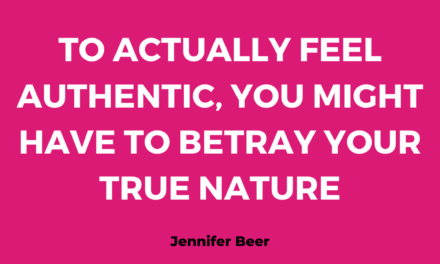3 Steps to building a compelling and satisfying “About me” as an alternative to personal branding
Let’s talk about Being Authentic in your Personal Branding.
How is that possible?
It’s not possible.
During this pandemic, many people found the time to do things that they would otherwise never had the time to do.
They pursued a new hobby, looked at their child properly for the first time, drank more alcohol than ever before, learned to use digital tools like Zoom, and many of them took care of some of the items on their to-do list that had been waiting and neglected for so long. In some cases, that turned out to be writing the “About me” section of their website. In order to do so, many rushed to google “personal branding” for the first time in their life. And that’s obviously not how you do it.

Personal Branding
“What does my LinkedIn channel look like? How can I best explain what I do and what I stand for?” After all, everyone today should have a purpose, a higher purpose beyond the pursuit of profit. That doesn’t make things any easier. And yet this is how many a quest toward personal branding begins.
When we use the expression “personal branding”, we are implying that individuals are made into a brand and marketed like one. What does this mean?
The brand comes from the market.
The term brand, used in marketing, stands for all the characteristics that make one marketable identity stand out from the competition. All the features by virtue of which objects, associated with a brand name, contribute to the construction of an identity constitute the core of what we call a “brand”. But there is more to it than meets the eye. A brand can be anything and provide anything. It can be associated with goods and services, as well as companies, individuals, municipalities, and sports teams. The characteristics that have a decisive influence on the customer’s behaviour and purchases are referred to as “brand-determining”.
Personal Branding means sharpening one’s brand and making it stand out from the competition. This is almost certainly going to be tricky, whatever market you may be in, because virtually all markets are saturated.
Personal Branding is now considered a conditio-sine-qua-non, without which an individual cannot survive in any market.
It doesn’t only apply to influencers, but also to entrepreneurs, founders, and increasingly to managers in companies, the so-called “leaders”.
Just be yourself. Sort of.
It has been said that being authentic is an essential part of successful branding. This is the first tip you will get on any article on personal branding. Including this one, apparently. Let me give you an example.
Nobody wants Baywatch-style fake beauty anymore. Celeste Barber hits that particular nail on the head like no one else. With her satire focusing specifically on artificial commercials and Instagram Influencer videos and showing what would be authentic, she leads the advertising world ad-absurdum.
That is comedy gold. But what does being authentic mean for non-comedians? Is “yourself” always the best thing you can be? This is the legitimate problem most people have with personal branding. The pressing question therefore is: “How can I adapt to the market and be authentic at the same time?”
Not only that, there are trends in personal branding (just like in anything else) that need to be taken into account. Such as the fact that this is not 1984, that Baywatch will no longer be in fashion in 2021, and that plus-sized models will be the driving force behind the beachwear market, since brands have noticed that there is a whole other market to be explored in there. But what is decisive is that the time has come to make Ashley Graham the real influencer.
Thank God.
But what does that mean in actual, individual terms? How is anyone supposed to meet the market demands and be authentic at the same time?
If the first step in personal branding is to be authentic. The second step is to see who the target group is and to adapt to them. Can you see the authenticity flying out of the window? Again, sort of.
It’s not unusual for a company to adapt to its target audience, its potential customers. Most people, however, will frown at the idea of applying the same concept to an individual and their personality.

Career storytelling as personal branding
When it comes to career storytelling, it is advisable to adapt the narrative to the recipient’s expectations. The average thinking person finds this a hard obstacle to overcome.
Here is an answer to that: Storytelling
Storytelling in its most literal sense: telling a true story, which is authentic and moving.
Is it that simple? Of course not.
Lucky for you, I am here to help — Cue my “Own your Story” 3-Step Program.
The crucial difference between me and most consulting businesses out there? I don’t assume what the market wants in the planning phase, but I adapt to what my customers want.
How do they want to be perceived? What feels good? What sparks joy?
What the program leads to are the three decisive steps that will help you Own Your Story.
- Step out of your comfort zone
Stepping out of your comfort zone means getting away from the madness described above: What is expected of me? How can I be authentic and still meet the expectations of my customers? How do my customers want to see me? How do I want to see myself? This is a painful Catch 22, where it would be entirely understandable for you to want to stick to your comfort zone. And yet, you are the only one who can step out of it.
And let me tell you: It is worth it!
Because then we can start working on the 2 steps leading you to own your story:
Go for it!





